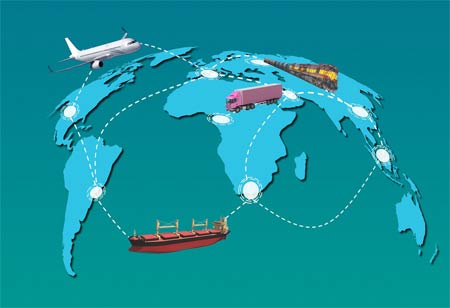THANK YOU FOR SUBSCRIBING
THANK YOU FOR SUBSCRIBING

By
Logistics Transportation Review | Monday, December 04, 2023
Stay ahead of the industry with exclusive feature stories on the top companies, expert insights and the latest news delivered straight to your inbox. Subscribe today.
International businesses can enhance their preparedness and operational efficiency, enabling them to thrive despite significant disruptions.
FREMONT, CA: Supply chain management is an ever-evolving field, and recent disruptions have accelerated certain trends, reshaping the global business landscape. These disruptions have prompted significant changes in supply chain management practices, making it crucial for businesses to adapt to the evolving landscape. Staying informed about these emerging trends is essential for businesses seeking to thrive in the coming years and beyond.
Digitalization has become a cornerstone in supply chain management, especially in the post-pandemic recovery phase. While digitalization in supply chains is not new, its significance has grown exponentially. In the past, logistics heavily relied on manual labor, but the integration of computers and the internet marked the onset of a data revolution in supply chain management. These digital technologies have greatly improved logistics planning, inventory management, and truck routing optimization. However, today's supply chains are moving toward advanced planning processes that leverage digital technologies to a much greater extent.
Digitalization of international trade is particularly critical during a global pandemic. It enables businesses to provide swift responses, end-to-end tracking, and optimal warehouse management, among other benefits. Digitalization has enabled businesses to reduce costs associated with physical shipping, such as labor, transportation, and storage. Additionally, it has enabled businesses to track their shipments in real-time, allowing them to quickly respond to changes in the marketplace. Finally, digitalization has enabled businesses to better manage their warehouses, plan their operations, and ensure efficient delivery.
The Internet of Things (IoT) enhances supply chain visibility. IoT devices connected to the internet provide data that can enhance various aspects of supply chain management, including production, inventory management, and predictive maintenance. This leads to asset optimization and improved return on investment (ROI). Businesses make better decisions and respond more rapidly to changes in the market by using IoT-enabled devices to provide real-time data on inventory levels, production progress, and customer satisfaction. IoT devices can help businesses identify potential risks associated with their supply chain, such as shortages, delays, and disruptions. This allows businesses to mitigate those risks, further improving their ROI.
Blockchain technology has also left a significant imprint on the supply chain industry. By integrating blockchain-enabled systems, businesses can establish a unified platform for various supply chain components, such as shipping lines, carriers, and logistics. This decentralized ledger system records and tracks the movements of shipping containers in real time, enhancing traceability and reducing the risk of counterfeiting. Additionally, blockchain enhances visibility and compliance in outsourced contract manufacturing. Supply chains are renowned for their volatility, requiring businesses to be prepared to adapt to unforeseen disruptions. Elastic logistics, which enable supply chains to expand or contract as needed, are pivotal for managing such fluctuations. Moreover, the increasing awareness of environmental issues has spurred a demand for sustainability in supply chain management. Companies are actively reducing their carbon footprint by lowering resource consumption.
In the ever-dynamic landscape of supply chain trends, organizations must proactively stay updated on current trends and global trade patterns. This proactive approach empowers companies to anticipate and effectively address potential future challenges.
I agree We use cookies on this website to enhance your user experience. By clicking any link on this page you are giving your consent for us to set cookies. More info





